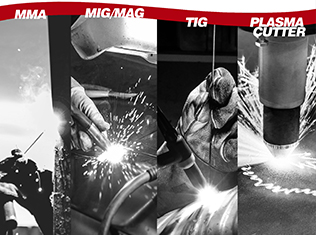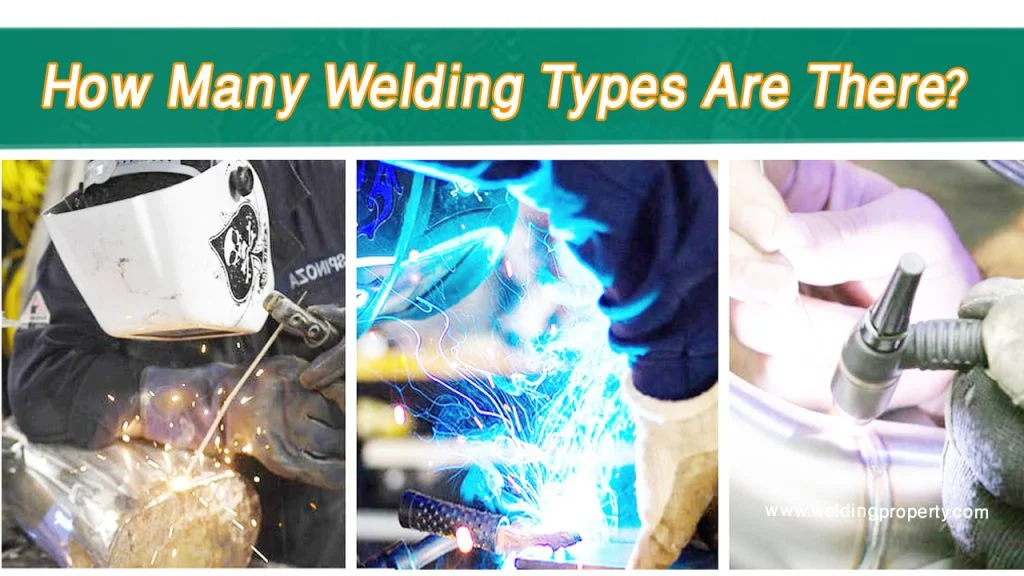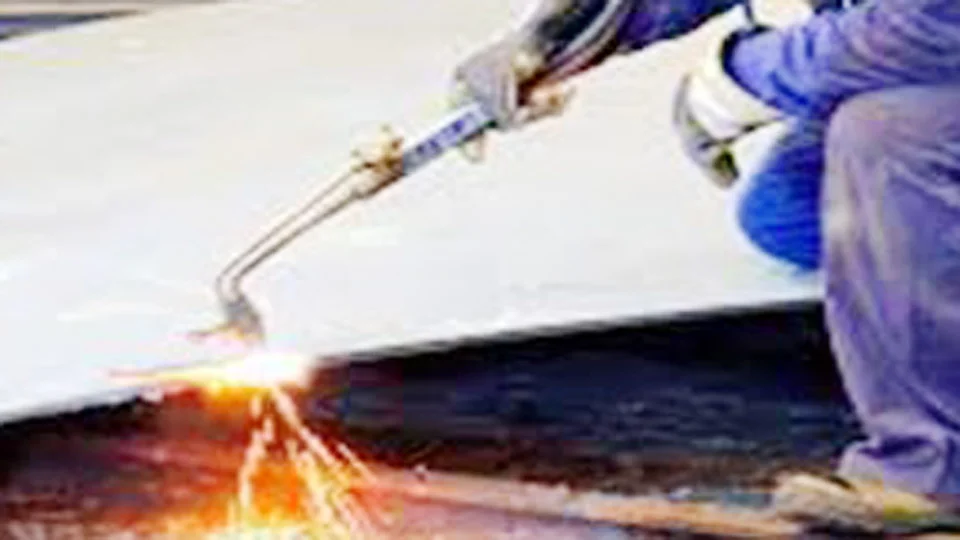Welding is essential for car repairs and custom builds. Different welding types offer unique benefits.
Understanding the best type of welding for cars can save time and money. Each method has its strengths, making it suitable for specific tasks. Whether restoring a classic car or fixing a fender bender, choosing the right welding technique is crucial.
This guide will help you navigate the most effective welding methods for automotive work. From MIG to TIG, we’ll explore which is best for your needs. Dive in to learn how each type can improve your car projects.
Introduction To Car Welding
When it comes to fixing cars, welding is a key skill. It’s not just for professionals; even hobbyists can benefit from knowing how to weld. But what exactly is car welding, and why is it so important? Let’s dive into the world of car welding to understand its importance and the best techniques to use.
Importance Of Welding In Car Repairs
Welding is like the glue that holds the car together. Cars are made of many metal parts, and welding is the process that joins these parts. Whether it’s fixing a rusted frame, repairing a broken exhaust pipe, or attaching new body panels, welding is essential. Without good welding, a car might not be safe to drive. So, knowing how to weld can save you money and keep you safe on the road.
Common Welding Techniques
There are several types of welding techniques, each suited for different tasks. Let’s look at some of the most common ones:
- MIG Welding: This is the most popular welding technique for car repairs. It’s easy to learn and can handle thin metals well. MIG stands for Metal Inert Gas, and it uses a wire electrode and a shielding gas to weld the metal.
- TIG Welding: TIG, or Tungsten Inert Gas welding, is more precise than MIG. It’s perfect for detailed work and thinner materials. However, it’s also more challenging and requires more skill.
- Stick Welding: This is the old-school method. Stick welding, or Shielded Metal Arc Welding (SMAW), uses a rod coated in flux to join metals. It’s versatile and can be used outdoors, but it’s not as clean as MIG or TIG welding.
Each technique has its pros and cons. MIG welding is like the swiss army knife of welding—versatile and user-friendly. TIG welding is the artist’s brush—fine and precise. Stick welding is the workhorse—rugged and dependable. Choosing the right technique depends on the job you’re doing and your skill level.
Next time you look at a car, think about all the tiny welds holding it together. They might be small, but they’re mighty. And with the right technique, you can make sure those welds are strong and reliable.

Credit: www.perfectwelders.com
Mig Welding
When it comes to fixing cars, welding is a crucial skill. One of the most popular and effective methods is MIG welding. Whether you are a professional mechanic or a DIY enthusiast, MIG welding can be a game-changer for your automotive projects. Let’s dive into why MIG welding is often considered the best type of welding for cars.
Advantages Of Mig Welding
MIG welding, or Metal Inert Gas welding, offers several advantages that make it ideal for car repairs and modifications. Here are some key benefits:
- Ease of Use: MIG welding is user-friendly, even for beginners. The process is straightforward, making it easier to learn than other types of welding.
- Speed: MIG welding is fast, which is essential when working on cars. You can complete your projects quicker, saving time and effort.
- Versatility: This welding method works well on various metals, including steel and aluminum, which are commonly found in cars.
- Cleaner Welds: MIG welding produces cleaner and more precise welds. This is crucial for the structural integrity and aesthetics of your car.
Best Practices For Mig Welding On Cars
To achieve the best results with MIG welding on cars, following some best practices is essential. Here are some tips to keep in mind:
- Proper Preparation: Clean the metal surfaces thoroughly before welding. Remove any rust, paint, or dirt to ensure a strong bond.
- Choose the Right Settings: Adjust the welder settings according to the thickness of the metal. This includes selecting the correct wire feed speed and voltage.
- Use Quality Equipment: Invest in a good-quality MIG welder and protective gear. Cheap equipment can lead to poor welds and safety hazards.
- Practice Good Technique: Maintain a steady hand and consistent speed. Hold the welding gun at the right angle, typically around 15 degrees, to achieve a smooth weld.
Imagine this scenario: You are working on restoring a classic car. The rusted parts need welding, and you want the job done perfectly. With MIG welding, you can achieve clean and strong welds, making your restoration project a success.
In conclusion, MIG welding is a fantastic choice for car repairs and modifications. Its ease of use, speed, versatility, and precision make it a favorite among professionals and hobbyists alike. By following the best practices, you can ensure top-notch results and drive your car projects to success.
Tig Welding
When it comes to welding for cars, precision and control are essential. Among the various welding methods, TIG welding stands out for its accuracy and finesse. TIG, which stands for Tungsten Inert Gas, is a method that uses a non-consumable tungsten electrode to produce the weld. What sets it apart? Let’s dive into the details!
Precision And Control
Imagine you are painting a delicate flower. You need a fine brush to get every petal just right. TIG welding is like that fine brush in the welding world. It offers incredible precision and control, which is crucial for car repairs and fabrication.
With TIG welding, you can adjust the heat input accurately. This means you can weld thin materials without burning through them. Think of it as having the power to cook your favorite meal to perfection, without overcooking or undercooking it.
- Fine Control: Allows for detailed, neat welds.
- Clean Welds: Produces minimal spatter and clean finishes.
- Versatile: Works on various metals including aluminum, stainless steel, and more.
Ideal Applications For Tig Welding
So, when should you use TIG welding on your car? Here are some ideal scenarios:
- Bodywork Repairs: TIG welding is perfect for repairing car bodies where appearance matters. It produces smooth, clean welds that are easy to grind and finish.
- Exhaust Systems: Since exhaust pipes are usually thin and often made of stainless steel, TIG welding is ideal for its precise heat control.
- Custom Fabrication: If you are building custom parts or modifying existing ones, TIG welding gives you the control needed for intricate designs.
Picture this: You are working on a custom exhaust for your car. You want it to look sleek and perform well. TIG welding helps you achieve that professional finish without any messy welds.
| Application | Benefit |
|---|---|
| Bodywork Repairs | Neat, clean welds that are easy to finish |
| Exhaust Systems | Precise heat control for thin materials |
| Custom Fabrication | Fine control for intricate designs |
In summary, if you’re looking for a welding method that offers fine control and clean results, TIG welding is your go-to choice. It’s like having a master artist’s brush in your toolkit, ready to create perfect welds on your car.
Stick Welding
Stick welding, also known as Shielded Metal Arc Welding (SMAW), is a popular welding method for cars. It uses an electric current to create an arc between the metal and the welding stick. The process is simple and effective. It is a favorite among many car enthusiasts and professionals.
Durability And Strength
Stick welding offers excellent durability. The welds are strong and reliable. This method can handle thick metal pieces. It creates a strong bond that holds up well under stress. Stick welding is also known for its deep penetration. This ensures a secure connection between metal parts.
Many car restorers trust stick welding for its strength. It is often used in chassis and frame repairs. The welds can withstand high pressure and heavy loads. This makes it ideal for structural components.
When To Use Stick Welding
Stick welding is best for thick metals. If you are repairing a car’s frame, this method is perfect. It is also useful for heavy-duty repairs. When dealing with rust or dirty metals, stick welding shines. It works well even in less-than-ideal conditions.
This method is also portable. You can use it outdoors or in remote locations. It does not require shielding gas. This makes it a good choice for on-site repairs. Stick welding is versatile and can be used in various positions.
Flux-cored Arc Welding
When it comes to welding for cars, Flux-Cored Arc Welding (FCAW) stands out as a reliable and efficient method. It’s perfect for car enthusiasts who want to repair or modify their vehicles. But what makes FCAW so special? Let’s dive deeper into its benefits and why it’s a great choice for handling thick materials.
Handling Thick Materials
One of the standout features of Flux-Cored Arc Welding is its ability to handle thick materials with ease. Imagine you’re working on a classic car restoration, and you need to weld thick steel parts. This is where FCAW shines. Unlike other welding methods, FCAW is designed to penetrate deep into the material, ensuring a strong and durable bond.
Here’s a simple analogy: think of FCAW as a super-strong glue that can hold together even the heaviest pieces. This makes it ideal for car frames, chassis, and other structural components. Plus, it’s not just about strength; FCAW also allows for a clean and smooth finish, which is essential for the overall look of your car.
Benefits Of Flux-cored Arc Welding
Now, let’s talk about the benefits of using FCAW for car welding. There are quite a few, but we’ll focus on the key ones that matter the most to car enthusiasts:
- High Deposition Rate: FCAW can deposit more weld metal in a shorter amount of time. This means you can get your projects done faster without compromising quality.
- Versatility: Whether you’re working on thin sheet metal or thick steel, FCAW is adaptable. It’s like having a Swiss army knife for welding!
- Outdoor Friendly: FCAW performs well even in windy conditions. So, if you’re working on your car in your driveway, you don’t have to worry about the wind disrupting your welds.
- Cost-Effective: With FCAW, you don’t need a separate gas supply, which can save you money and make the welding process simpler.
In a nutshell, FCAW is a robust and versatile welding method that’s particularly well-suited for car repairs and modifications. It combines strength, speed, and simplicity, making it a favorite among both amateur and professional welders.
So next time you’re tackling a welding project on your car, give Flux-Cored Arc Welding a try. You might just find it’s the perfect tool for the job!

Credit: www.youtube.com
Choosing The Right Welding Method
When it comes to welding for cars, selecting the right method can be a game-changer. Whether you’re restoring a classic beauty or repairing your daily driver, the welding technique you choose can impact both the quality and durability of your work. But how do you make that choice? Let’s dive into the details and help you find the best welding method for your car projects.
Factors To Consider
Several factors come into play when choosing the right welding method for cars. Here are some key points to keep in mind:
- Material Type: Cars are made of various materials like steel, aluminum, and alloys. Different welding methods work better with specific materials.
- Thickness of Metal: Thicker metals require more powerful welding techniques, while thinner materials need precision to avoid damage.
- Accessibility: Consider how easy it is to access the welding area. Some methods are more suited for tight spaces.
- Experience Level: Your own skill and comfort level with different welding methods can make a big difference.
Comparing Welding Techniques
Now, let’s compare some popular welding techniques to see which might be the best fit for your automotive needs.
| Welding Method | Pros | Cons |
|---|---|---|
| MIG Welding |
|
|
| TIG Welding |
|
|
| Stick Welding |
|
|
Choosing the right welding method often boils down to a balance of these factors. For instance, if you’re working on a classic car with lots of thin metal panels, MIG welding might be your best bet. On the other hand, if you’re repairing a modern car with aluminum parts, TIG welding could be the way to go.
Remember, practice makes perfect. Don’t be afraid to experiment with different techniques to find what works best for you. Happy welding!
Safety Tips For Car Welding
Welding cars can be a rewarding and practical skill. But it requires utmost attention to safety. Ensuring a safe welding environment can prevent serious injuries. Here are some essential safety tips for car welding.
Protective Gear
Wearing protective gear is crucial. Always wear a welding helmet with a proper shade. This protects your eyes from harmful UV rays. Use safety goggles for additional eye protection. Wear flame-resistant gloves to protect your hands. A leather apron can shield your body from sparks. Don’t forget ear protection to guard against loud noises. Proper footwear, like steel-toed boots, is also important. This helps protect your feet from heavy objects and sparks.
Safe Work Environment
A safe work environment is essential for car welding. Ensure good ventilation in your workspace. Welding produces fumes that can be harmful. A well-ventilated area helps reduce exposure. Keep flammable materials away from the welding area. This includes papers, oils, and solvents. Have a fire extinguisher within reach. This can prevent small fires from spreading. Ensure your workspace is clean and organized. Clutter can cause accidents. Use welding curtains or shields to protect others from sparks.
Tools And Equipment
Choosing the best type of welding for cars involves understanding the right tools and equipment. The right tools ensure safety and efficiency. They help achieve high-quality welds. Investing in the correct equipment can make a big difference. Let’s explore the essential tools and their maintenance.
Essential Welding Tools
For welding cars, a MIG welder is essential. It’s suitable for thin metal sheets. A TIG welder is also useful for precise welds. A plasma cutter helps with cutting metal parts. Welding helmets protect your face and eyes. Welding gloves keep your hands safe. Clamps hold metal pieces in place. Wire brushes clean the weld area. An angle grinder smooths rough edges. These tools are crucial for any welding project.
Maintenance And Care
Maintaining your welding tools is vital. Clean your tools after each use. Store them in a dry place. Inspect tools regularly for damage. Replace worn-out parts promptly. Keep your welding helmet lens clean. Check gas levels in your MIG or TIG welder. Sharpen your plasma cutter blades often. Proper maintenance extends the life of your tools. It ensures they work efficiently. Take care of your equipment for better welding results.
Common Mistakes To Avoid
Welding cars requires precision and skill. Many mistakes can occur, which can affect the quality and safety of the welds. Knowing these common mistakes can help you avoid them. This ensures your car welding projects are successful and durable.
Preventing Weld Failures
One common mistake is not preparing the metal surfaces properly. Dirt, rust, and paint can weaken the weld. Always clean the metal thoroughly before welding. Another mistake is using the wrong type of filler metal. This can lead to weak joints. Ensure the filler matches the base metal.
Incorrect welding techniques also cause weld failures. Avoid excessive heat, which can warp the metal. Use the right amperage settings for the thickness of the metal. Proper ventilation is essential. It prevents contamination of the weld by gases.
Improving Welding Skills
Practice is key to improving your welding skills. Start with small projects to build confidence. Another mistake is not wearing the right safety gear. Always use a welding helmet and gloves. This protects you from burns and harmful UV rays.
Understanding the different types of welds is important. Each type has its own technique and application. Learn about MIG, TIG, and stick welding. This knowledge helps you choose the best method for each job. Lastly, seek feedback from experienced welders. They can provide tips to improve your techniques.

Credit: www.autotrainingcentre.com
Frequently Asked Questions
What Type Of Welding Is Used On Cars?
MIG welding is commonly used on cars. It is preferred for its ease, speed, and strong welds. TIG welding is also used for precision work.
What Kind Of Welding Is Best For An Auto Body?
MIG welding is best for auto body work. It provides clean, strong welds and is easy to learn and use.
What Kind Of Welder Is Best For Car Frame?
A MIG welder is best for car frames. It offers precision, ease of use, and strong welds necessary for structural integrity.
Is Tig Or Mig Welding Better For Exhaust?
TIG welding is better for exhaust systems. It offers precision and cleaner welds, ideal for thin materials.
Conclusion
Choosing the best welding method for your car is crucial. Different techniques offer various benefits. MIG welding is user-friendly and versatile. TIG welding provides precision for delicate tasks. Stick welding works well for thicker materials. Each method has its pros and cons.
Assess your needs before deciding. This helps ensure safety and quality. Investing time in research pays off. Happy welding!

